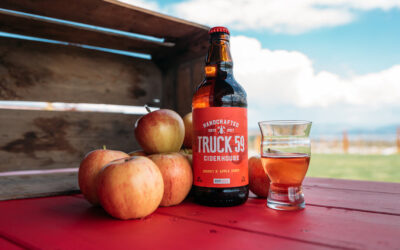Glacial remains and long hours of summer sunshine make this bucolic strip of land on the east side of Okanagan Lake wine heaven. The slice of land on the southeastern flank of Okanagan Lake known as the Naramata Bench boasts BC’s densest concentration of wineries. Twenty-five lie along what must be the Okanagan’s best travelled dead-end.Naramata Road winds lazily from Penticton to the southern boundary of Okanagan Mountain Provincial Park, a distance of less than 15 kilometres. It affords ever-changing vistas of the undulating landscape along the narrow strip between the Kettle Valley Railway trail on the higher elevations and rugged cliffs along the lake.
But this route offers more than aesthetic appeal. Grape growers especially appreciate the western exposure that allows vines to capture every drop of sunlight from mid-morning to nightfall. “There is a constant breeze which heats in winter and cools in summer. It means less winter damage, and less bunch rot and mould during the growing season,” says Gary Reynolds of Lake Breeze Vineyards, describing the lake effect.
Tim Watts, a geologist who has turned to grape growing with Kettle Valley Winery talks about soil structure. “Bedrock above Naramata Road is the oldest in Western Canada, dating back two billion years,” he says.
He goes on to explain that a geological fault runs from Prince George to Washington beneath the Okanagan Valley. This explains volcanic activity in this area 60 million years ago. At the time, the soil above what is now Naramata Road collapsed into the lake, leaving bedrock exposed. Later, glaciers left well sorted lake and stream bed sediment, including sand, silt, clay and ribbons of gravel, below the road and glacial till above.
Luke Smith of Howling Bluff Estate Wines refers to the silty mixture that prevails on his lower bench vineyard as “riprap, or material used to protect shorelines, but without rocks.”
Aiming high is the way forward, according to Smith. He stresses the need to focus on varieties that grow well consistently.
“Malbec and Merlot are fantastic,” he says, “but nothing can stop Pinot Noir.” Not surprisingly, Howling Bluff’s Pinot Noir is recognized as one of Canada’s best.
Photo by Michael Botner




0 Comments